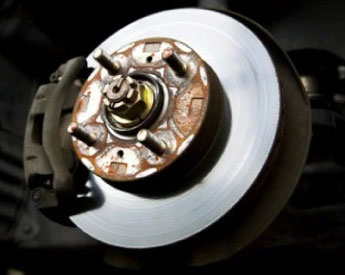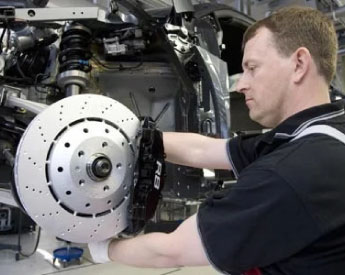Brake disc is one of the main parts of the brake system of automobiles. In this publication, we will talk about what is the brake disc, how to change the brake disc, how to turn the brake discs, etc.

Most drivers know that they need periodic maintenance to keep their vehicles in good working order.
This can include regularly changing the engine oil, maintaining proper tire pressure, and sometimes monitoring the levels of the vehicle's vital fluids.
Some components and systems require a little more maintenance, while others require a little less.
In terms of your vehicle's brake system, it's nothing to worry about if you regularly check the brake fluid and replace the brake pads.

What is Brake Disc?
The brake disc, which is one of the components of the brake system of the vehicles, works reciprocally with the brake lining. When you apply the brake to initiate the deceleration and stopping action, the brake pad that makes the first move will start the friction on the brake disc.
The brake disc is where friction starts. The part that allows your vehicle to stop properly without making it right or left is called the brake disc.
Brake Disc Types
The variety of brake discs varies according to the brand, model and performance they need of our vehicles. There are 3 types of brake discs produced with today's technology.
Standard Brake Disc
Perforated Brake Disc
Slotted Brake Disc
Standard Type Brake Disc:
Flat type brake discs, which we call standard, are used in most of the cars. This type of disc has features to meet the needs of many vehicles.
Flat type discs, whose production process is serial, are quite affordable compared to other types of discs.
Perforated Type Brake Disc:
There are two main types of high performance brake discs: perforated and slotted. Perforated brake discs, as the name suggests, have holes drilled into them.
Having a drilled hole in any of your brake parts may seem counterintuitive, especially if those holes are on the brake discs.
A punctured disc means there is less surface area for the brake pads to grab and stop the car, but there are several reasons why punctured discs make sense.
The first is heat. When the brake pad grips the disc, it creates heat-generating friction. If this heat cannot escape, it will cause brake fade, which reduces the brake's stopping power.
The second reason is gas buildup. In fact, this is no longer a problem with new types of pads. However, the materials used in some older brake pads caused gas to accumulate between the discs and the pads.
The last reason is this. If a car is driven through a puddle, a car wash, or even a rainstorm, the brake discs can get wet. A wet brake rotor is slippery and the brake pads are difficult to grip. Having drilled holes in a brake disc ensures that heat, gas and water are quickly removed from the disc surface and brake performance is strong.
The downside to using drilled discs in your vehicle is that all these holes tend to weaken the discs. Cracks may appear after hard and sporty driving.
Slotted Type Brake Discs:
Slotted brake discs use slots carved into the flat metal surface to move gas, heat, and water away from the surface of the discs. You can think of crevices as irrigation ditches that safely transport unwanted material out.
Slotted brake discs are popular with performance car drivers because the type of car they use puts a lot of stress on the discs.
As we mentioned above with perforated brake discs, perforated discs are weakened, which increases the risk of cracking around the punctures, especially with hard back-to-back riding.
Slotted brake discs may be a better choice of brake parts for some performance car drivers, as they tend to be slightly more durable than punctured brake discs.
Of course, slotted brake discs aren't perfect either. They tend to wear out the brake pads very quickly. For this reason, the most common performance type brake discs found in mass production performance cars are the perforated brake discs.



Janet Lopez